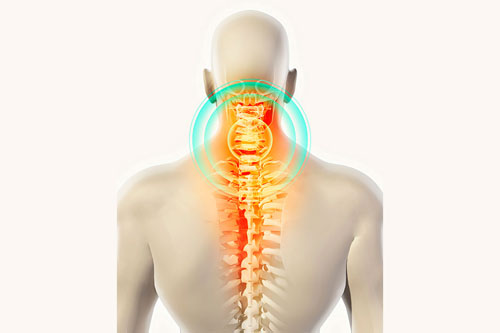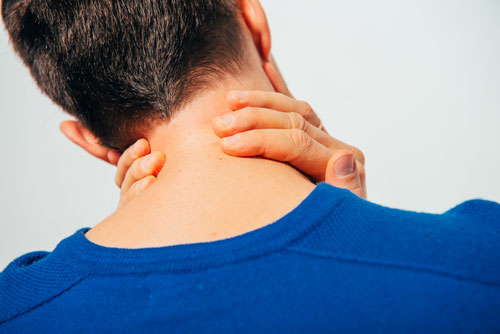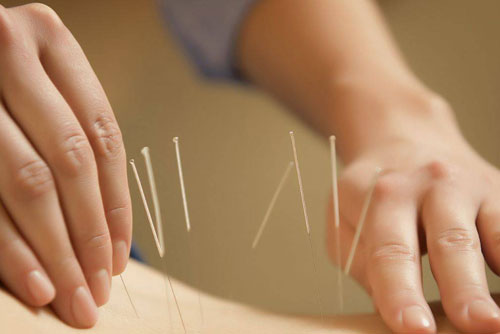A burning sensation in the head can be a sign of serious disorders of the nervous system. Very often, this symptom occurs with vegetative-vascular dystonia. But, it can also manifest itself in the presence of severe pathological changes in the cardiovascular system, problems with the spine or as a result of an unhealthy lifestyle.
Why does a burning sensation appear in my head?
Typically, burning headaches resemble the effects of intense warming ointments or strong sun rays. Burning can spread all over the head, and can be localized only on one side or even bother a person at only one point. Sometimes the pain radiates to the neck, goes down to the chest, to the back.
Burning in the head with VVD may be accompanied by a number of symptoms:
- Dizziness;
- Increased blood pressure;
- Heavy sweating;
- Tachycardia;
- Tinnitus;
- Shortness of breath, etc.
The appearance of a burning sensation in the head region during vegetative-vascular dystonia suggests that a person is physically and emotionally overstressed, he has difficulty outflow of blood from the brain due to impaired blood vessel functions. In addition, tense back muscles can compress the nerve endings of the spine, causing a burning sensation and discomfort in the head.
If a person abuses alcohol or smokes, his circulatory system may also be disturbed. Intoxication of the body and a sedentary lifestyle lead to the fact that the blood entering the brain cannot circulate normally. It accumulates in the skull, presses on the lining of the brain and provokes a burning sensation or other pain.
But, it is worth noting that a burning sensation in the head occurs not only with VSD. Such a symptom may accompany other diseases:
- Osteochondrosis of the cervical spine;
- Hormonal disorders;
- Arterial hypertension;
- A brain tumor.
To determine the cause of a burning sensation in the head, you may need to do a computed tomography, x-ray, electroencephalography, or MRI.
Treatment of pain symptom of the IRR
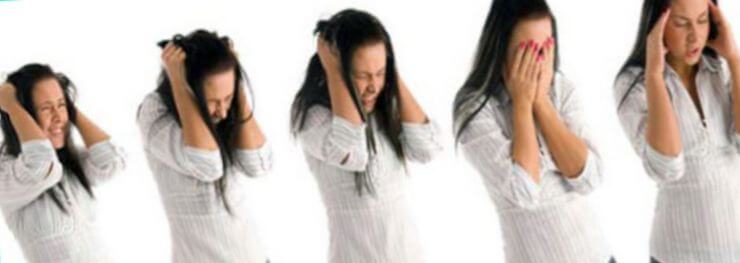
Patients know that vegetative-vascular dystonia never manifests as a separate symptom, such as a burning sensation in the head. Usually it is accompanied by other unpleasant signs, which together are called "". Since VVD is a complex of symptoms, the treatment is carried out by a whole complex of drugs and physical procedures.
The medications prescribed by doctors for burning in the head can be different. But basically they belong to such groups:
- Sedatives;
- Tranquilizers;
- Nootropics;
- Sedatives.
All pharmacological agents help calm the nervous system, as well as restore normal cerebral circulation.
It is also recommended that patients do therapeutic exercises, take reflexology courses, and lead a healthy lifestyle. In most cases, patients need to learn how to cope with stressful situations that provoke a hyperreactive reaction of the nervous system and block the normal outflow of blood from the brain.
As a prophylaxis, patients with VVD are advised to organize their lives in such a way as to prevent repeated panic attacks with intense pain. It is necessary to get enough sleep and enough rest. You should avoid stress, learn to be friendly. Only complex therapy and preventive measures will help get rid of the symptoms of VSD.
Headaches in the back of the head are familiar to many firsthand, they can be of varying intensity and duration. Such a symptom is always a signal of disturbances in the body and requires clarification of the cause with its subsequent elimination. Taking pills for a headache does not eliminate the pathological process, but only relieves discomfort, which is temporary. There are many reasons why the head of the head hurts, consider the most common of them.
Possible reasons
The causes of pain are physiological or pathological in nature. If the first option does not lead to various disorders and disappears when the factor or situation that causes pain in the head is eliminated, then pathological processes require medical attention and can have serious consequences. If your head hurts and you feel dizzy, you should consult your doctor for an appointment for examination and correction of your condition; self-treatment with traditional medicine methods in this case is unlikely to be successful.
With cervical osteochondrosis, the back of the head hurts constantly, in addition to the back of the head, discomfort is localized in the neck, in the temples, and pain in the hands may occur.
Sharp turns and bends in the neck cause the manifestation to intensify, especially at the time of exacerbation of osteochondrosis.
For the destruction of the vertebrae of the cervical spine, migraine attacks are characteristic, with severe pain in the right or left occipital region and with spread to the temples. Against the background of migraine attacks, the following are possible:
- nausea;
- vomiting
- darkening in the eyes;
- impaired coordination of movements.
Constant headaches in the occipital part of the head, accompanied by nausea, tinnitus, followed by hearing impairment, visual hallucinations (darkening in the eyes, flickering of “flies”) and a temporary loss of ability to move, can indicate the development of vertebrobasilar syndrome.
Long-term treatment is required under the supervision of a neurologist.
The disease is characteristic of people in professions of forced static stress (the cervical region is tense for a long time). Cervical spondylosis is determined in old age, in people over 55 years old. It is accompanied by the following symptoms:
- stiffness;
- stiffness of movements.
The gradual wear of the intervertebral discs triggers the protective mechanisms of the body, expressed in the formation of osteophytes (bone growths). Gradual compression of the nerve roots by osteophytes causes pain in the occipital part of the head with radiation to the eyes and ears.
A sharp headache accompanies any attempt to make a turn in the neck, however, maintaining peace does not bring relief.
A severe headache in the back of the head is accompanied by sleep disturbance and increased irritability.
Hypertension
Pain in the back of the head and dizziness are companions of hypertension. Even a slight increase in blood pressure (over 125/85 mm Hg) can cause the appearance of unpleasant symptoms. Cephalgia in hypertension is often accompanied by the following symptoms:
- optic nerve dysfunction (flickering "flies" in front of the eyes, bifurcation);
- tinnitus;
- pulsation in the temporal and parietal areas;
- nausea
A strong throbbing pain is observed from the very awakening and is poorly stopped by analgesics, relief comes with a decrease in blood pressure or after a single vomiting that occurs at the peak of the headache.
Cervical myositis
Inflammation of the muscles of the cervical region often provokes pain in the back of the head at the base of the skull, gradually spreading to the entire back of the head. At the same time as head pain, discomfort in the interscapular region and the shoulder girdle is determined, and the syndrome intensifies with movements.
Myogelosis
The disease is characterized by a violation of blood supply to the muscles of the neck, which leads to pain in the back of the head, accompanied by dizziness and stiffness of movement.
Pathology can be suspected when probing painful seals in the muscles of the neck.
Occipital Neuralgia
If the occipital part of the head hurts, there is a possibility of inflammation of the nerve innervating the back of the head (neuralgia). The causes of pathology are hypothermia against the background of the existing destructive process of the neck (osteochondrosis). Pinched nerve root increases the risk of developing an inflammatory process along the nerve due to a malfunction in tissue nutrition.
Pain syndrome varies depending on the activity of the pathological process, with exacerbation, patients complain of sharp pain in the back of the head (by the type of lumbar), radiating to:
- cervical spine;
- jaw
- back (rarely).
Without exacerbation of pain in the back of the head, they become dull, debilitating. As a feature of the disease, an increased sensitivity of the skin of the occipital region is noted.
Vascular pain
A headache in the occipital region can occur with a spasm of arteries that feed the skull or have a venous nature. Arterial circulation is manifested by the following symptoms:
- intense, throbbing pain extending to the frontal and parietal region;
- amplification of the syndrome with any movement or static stress;
- reduction of pain at rest and with a relaxed state of the neck muscles (for example, after massage or relaxation on an orthopedic pillow);
- slight dizziness after an attack.
Pain in violation of the venous outflow is dull in nature, accompanied by a feeling of heaviness and bursting. Such pain is characterized by the following symptoms.
- They remain for a long period of time and arise in the morning.
- Relaxation of the muscles of the neck and rubbing bring little relief.
- They are accompanied by swelling of the eyelids and puffiness of the face.
- Lying position, work in a slope reinforce negative phenomena.
Professional pain
Occipital headache is a problem of people who spend a long time in a forced sitting position. At risk are drivers of vehicles, office workers, programmers, and most mental workers.
Pain in the back of the head occurs due to overstrain of the muscles, causing circulatory disorders. Dull pains persist for a long time, rubbing and turning the head facilitate the condition.
Advice!To avoid unpleasant sensations of the back of the head during professions associated with prolonged static overstrain of the neck muscles, take a break in work every 50 minutes (for 5-10 minutes). During the break, perform simple sets of exercises aimed at unloading the neck and shoulder girdle.
Increased intracranial pressure
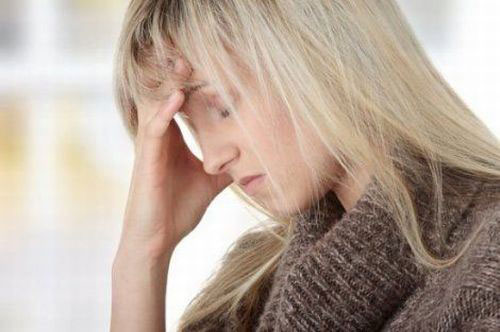
Intracranial hypertension is accompanied by severe headaches that are diffuse or localized in the back of the head and temples.
The nature of headaches in the occipital part of the head with increased intracranial pressure has the following symptoms.
- The pain is pressing or bursting.
- Nausea and vomiting do not alleviate the condition.
- The feeling of heaviness in the head persists even at rest.
- An unpleasant sensation in the back of the head is accompanied by pain in the eyes.
- Bright light and loud sound intensify the headache.
Before visiting a doctor at home, you can alleviate the condition a bit with the following measures.
- For the time of exacerbation, retire in silence, creating partial shade in the room.
- The absence of stress and proper rest will also help in a situation when your head hurts.
Malocclusion
Malocclusion is characterized by a complex of symptoms, the most striking of which is recognized as pain in the back of the head due to dysfunction of the temporomandibular joints.
The main symptoms of malocclusion or inflammation of the temporomandibular joints are listed below.
- The back of the head hurts from several hours to several days.
- Appearing in the morning, the pain gradually increases in the evening.
- The pain can be localized in the right part of the nape or left with the greatest intensity in the lower part.
Important!You may suspect malocclusion if you feel a click when you open your mouth. If such symptoms are found, consult your dentist.
Stress
The head of the head often hurts in women due to severe nervous overwork. The syndrome can be of a different nature, from acute throbbing pain (with a strong emotional outburst) to dull and bursting pain (during a period of depression). The back of the head on the left side of the head hurts more often with a concomitant increase in blood pressure. The first thing a patient can do to eliminate this pain is to calm down and relax. If it is impossible to cope with emotional stress on your own, a therapy is prescribed to normalize mental balance. It includes:
- massage;
- pills or herbal preparations.
Features of headaches in the occipital part of the head
Pain in the back of the head varies in intensity and duration. By the nature of the headache, the following types are distinguished:
- dumb;
- crushing or bursting;
- throbbing
- spicy;
- local or covering the entire head.

It can be of varying intensity, from a mild syndrome to unbearably strong, occur occasionally or persist everyday for many years. The cause of the headache is also of great importance in the diagnosis of pathology.It occurs against the background of certain events in isolation.
Pathology also differs in the localization of the process.
On right
Pain in the right side of the head is a manifestation of the following pathologies:
- migraine;
- myositis;
- myogelosis;
- neuralgia.
One-sided cephalgia may occur with other pathologies (brain tumors), but still more often the symptom is more diffuse and is projected over the entire surface. Head pain on the right requires a full examination and treatment of the cause of the pathology.
Left-side cephalgia
When the back of the head on the left hurts, the cause more often is a lesion of the cervical spine. If the syndrome persists for more than a few days, you need to contact a neurologist or therapist in a hospital. A full treatment allows you to quickly get rid of this pain, except in cases of brain damage.
Pain in the back of the head at the base of the skull
A headache in the back of the head at the base of the skull hurts, often due to an injury or illness of a neurological nature. Pain of this localization is the most common. When identifying the cause of the syndrome, the patient must know exactly what is bothering him:
- the nape of the head;
- parietal region.
The most common reason for burning the back of the head is considered to be nervous or physical stress.
The following are what to do if the back of your head hurts:
- provide yourself access to fresh air;
- with the stressful nature of the pain, calm down and relax;
- in case of overwork it makes sense to sleep and rest;
- relieve the symptom with massage and relaxing music.
If these measures did not help, the cause is more serious than fatigue, and to eliminate cephalgia, it is necessary to find out and eliminate the disease that causes the attack.
Cephalgia of childhood
Possible causes of headaches depend on age, in infants the syndrome can occur against the background of bright light, noise or stuffiness. In older children, against the background of increased excitability or overwork, however, serious pathologies can also provoke pain.
Causes of cephalgia in children:
- vascular disorders;
- malnutrition;
- neurological problems;
- head injuries;
- psychological factors (experiences and stresses).
Advice!The causes and treatment are directly dependent on each other, do not try to suppress the symptom by taking painkillers, because a headache is just a signal of malfunctions in the body. Cephalgia can be eliminated only if the pathology that caused it is treated. In other cases, the pain will annoyingly declare itself.
Which doctor to contact
If a headache occurs, you should first contact a therapist or neurologist. Having examined the patient, specialists can appoint additional consultation with an ophthalmologist, dentist, oncologist, psychiatrist or psychologist.
Diagnostic measures
Examination of the patient with a headache begins with the collection of complaints and determine the features of the manifestation of the syndrome, then the doctor will prescribe the necessary additional studies:
- blood pressure control;
- fundus examination at the ophthalmologist;
- MRI of the brain and spine of the cervical spine;
- angiography;
- a detailed blood test to determine the general level of health and exclude the inflammatory nature of the neck cephalgia;
- Ultrasound of internal organs;
- electroencephalogram;
- consultation with an ENT and a dentist.
The examination volume is selected individually according to the accompanying symptoms. After evaluating all the test results, further management of the patient is selected.
Treatment
Headache treatment is carried out comprehensively and in accordance with the established diagnosis. It includes various methods:
- taking medications (for stopping the attack and for long-term therapy, they differ);
- methods of physical influence of various factors (physiotherapy);
- treatment folk remedies.
Important!With any pathology, the normalization of lifestyle and the selection of proper nutrition creates a favorable background for the therapy. The presence of pain in the back of the head signals the need to change daily habits and correct the behavioral aspect.
Drug treatment
![]()
Take medications only on the recommendation of a doctor at the prescribed dosage. Many of the tools have side effects or contraindications for use.
- Preparations of a mild therapeutic effect with cephalgia of the occipital region include Acyclofenac, Celicoxib.
- As emergency drugs (with an attack of severe pain), carbamazepine and Pregabalin are used.
- The following drugs will help relieve muscle tension: Midokalm, Tizanidin.
- With vitamin deficiency, neuromultivitis is effective.
- Improve the vascular nutrition of the brain: Pentoxifylline, Mexidol.
- Corvolol, Valocardin, Afabazole and other sedatives will allow to eliminate vegetovascular disorders against the background of nervous overvoltage.
- With arterial hypertension, it is necessary to take antihypertensive drugs: Enap, Egilok, Anaprilin.
Given the wide variety of processes manifested by burning and pain in the occipital region, the appointment of pharmacological agents is possible only after a complete examination and determination of the etiology of the syndrome. Sometimes it may be necessary to consult several narrow specialists at the same time, the chances of getting the right remedy during self-treatment are minimal.
Manual therapy
Manual therapy allows you to eliminate headaches in the localization of the nape caused by neurological disorders:
- osteochondrosis;
- occipital nerve neuralgia;
- stress
- professional cephalalgia.
Exposure to certain points has a pronounced effect on the body, for treatment it is necessary to contact an experienced manual technician.
Massage
Massage is used in the same cases as manual therapy. It has a relaxing effect. Both types of treatment are carried out in courses of 10 days. In chronic or destructive pathologies of the spine, a course of treatment is recommended to be repeated every six months.
Physiotherapy
Physiotherapeutic procedures are prescribed after relief of acute pain and are carried out in courses of 10-20 days to improve blood circulation, eliminate muscle inflammation and normalize the nervous system.
With cephalgia of the occipital region, the following procedures are effective:
- acupuncture;
- electrophoresis;
- iontophoresis;
- magnetotherapy;
- water procedures (therapeutic bath, Charcot's shower and circular, hydromassage, bubble bath, swimming in the pool);
- laser treatment.
The selection of the method is carried out by a physiotherapist based on the established diagnosis and taking into account the general condition of the patient.
Physiotherapy
Physical therapy is represented by a set of exercises aimed at solving the problem, in this case, the elimination of pain in the occipital region. The choice of exercises depends on the diagnosis, it is selected individually. Basically, all movements are aimed at relaxing and strengthening the muscles of the neck and shoulder girdle, improving cardiovascular activity and eliminating tightness and stiffness.
Alternative methods of treatment
Folk methods to eliminate headaches effective in an attack of cephalgia and in combination with fixed assets for long-term therapy of pathological processes of the body. Alternative methods of therapy can also harm if used improperly, so the use of such measures requires the coordination of a doctor.
Arsenal of alternative therapy methods to combat an unpleasant feeling in the neck:
- herbal medicine (involves taking decoctions of medicinal herbs, the most commonly used plants that have a sedative and analgesic effect (mint, chamomile, oregano, St. John's wort, calendula, hawthorn, motherwort, valerian));
- water (it can be a contrast shower, a cold or hot foot bath (depending on the cause of the pain), rubbing large vessels and face with cold water, rinsing hands);
- the use of compresses with vinegar;
- rubbing the temples and parotid zone with essential oils;
- self-massage;
- breathing exercises;
- two hours sleep in a well-ventilated area.
To prevent unpleasant sensations in the neck and neck, it is recommended to monitor the state of health:
- observe the regime of work and rest;
- to control the emotional state;
- provide the body with adequate physical activity;
- exclude sudden movements;
- to refuse from bad habits;
- choose a balanced diet, necessary for the normal functioning of the body;
- to walk outside;
- eliminate prolonged static stress in the cervical region;
- apply various techniques to relax tense muscles throughout the day;
- visit a masseur and a specialist in physical therapy;
- enjoy everyday trivia more.
Observing the simple rules of a healthy lifestyle and eliminating unpleasant processes as they arise with the help of specialists, a person can for a long time remain cheerful and full of energy to achieve their goals.
Important! Doctors in shock: "An effective and affordable remedy for joint pain exists ..." ...
Currently, many people complain that they are worried about an unpleasant burning sensation in their head. It is worth noting that this sensation can be in absolutely any part of the head. It often happens that a headache is accompanied by redness of the eyes. Some patients complain that the burning sensation gradually spreads to the shoulders and chest. Sometimes shaking the head may occur. Tremor of the head with cervical osteochondrosis can be seen not only in adults, but also in children.
This symptom in certain cases is accompanied by high blood pressure, sweating and tachycardia. Therefore, the question arises: what are the real causes of these symptoms and how to deal with them?
The main causes of burning
Burning in the head can occur due to several diseases:
- First of all, a headache can be caused by problems with the spine. Therefore, if the doctor confirms the diagnosis cervical osteochondrosis, you do not need to self-medicate, but follow the recommendations of a doctor who will first prescribe an examination, and then, purely individually, will prescribe treatment. After all, with cervical osteochondrosis, the main thing is to eliminate the cause of the pain.
- Burning in the head can be caused by hormonal disorders in the body.
- Some patients who have experienced severe stress or fatigue, are faced with the fact that their vascular tone is impaired, for this reason, blood circulation in the brain is also impaired. Therefore, a headache and heaviness in the head is the first symptom in which you need to consult a neurologist. He will first check the patient before making a diagnosis to make sure there are no tumors. To do this, you need a tomography of the brain. It does not hurt to undergo an examination by a reflexologist who will tell you how to eliminate pain, prescribe medications that strengthen the general tone of the body and help in the fight against various negative environmental factors.
- Burning in the head occurs in those who lead the wrong lifestyle: smokes, takes alcohol, often overwork, and so on. Of course, it will be possible to remove the pain if the above factors are eliminated. But in order to completely eliminate the discomfort in the neck and head, doctors recommend a special diagnosis.
- Hypertension is another disease in which the patient can feel a kind of trembling and also a burning sensation in the head. These symptoms appear due to the fact that there is prolonged pressure on the vessels, which leads to their narrowing. Therefore, the brain, feeling the lack of a certain amount of arterial blood, provokes pain.
From all that has been said, it can be concluded that pain in the neck and head can be caused not only by osteochondrosis, but also by other diseases, therefore, it is mandatory to undergo a diagnostic procedure.
Modern methods of burning treatment
With cervical osteochondrosis, you need to consult not only an orthopedist, but also a neurologist. He will be able to attribute all the necessary pills and other drugs that will help get rid of anxious and painful symptoms. Drugs need to be taken in several courses, since in one course the effect will not be achieved.
When the neck suffers with osteochondrosis, you need to rid the muscles that are in cervical, from hateful tension. For this, you should consult a chiropractor and a specialist in osteopathy.
They will schedule classes with instructors in sports such as Pilates, yoga, or calanetics. With cervical osteochondrosis, first classes should be conducted under the guidance of a specialist along with other patients, and then only at home.
It is quite important for osteochondrosis to adhere to the correct regimen of the day, significant loads and negative habits should be avoided. The help of a nutritionist, who will help to choose an individual diet, will also help.
In addition, it is worth trying to learn how to breathe correctly, the main thing should be diaphragmatic breathing, you can learn it yourself.
What is tremor and what are its types?
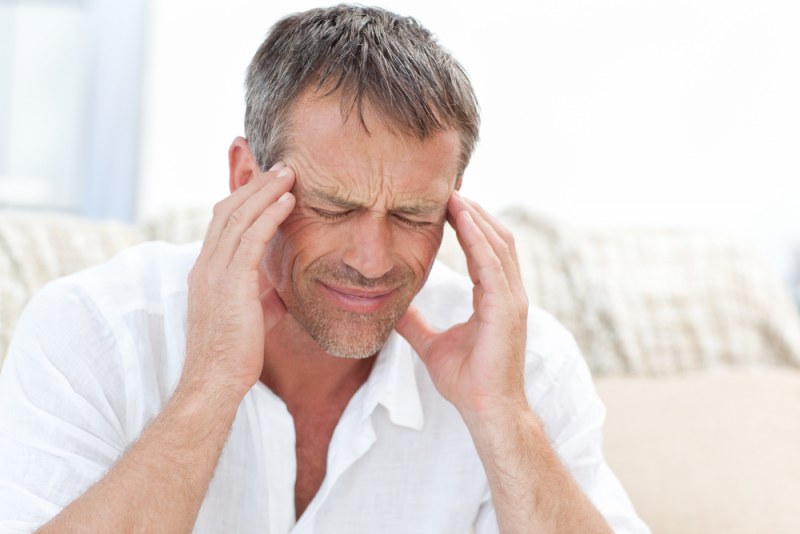
Most patients who hear the name tremor are perplexed, believing that it can be with someone, but not at home. Tremor is the trembling of certain parts of the body, especially the head.
Of course, children suffer from this disease less often, only when they get stress or have pathologies in the brain.
More often tremor can be observed in the older generation. Practice shows that if osteochondrosis causes tremor of the head, then patients are afraid not even of the disease itself, but of how others around them will perceive them.
Head tremor in cervical osteochondrosis is of several types:
- Benign head tremor in most cases is inherited, so getting rid of it is quite difficult. Jitter can occur both spontaneously and in stressful situations. Of course, in younger and younger ages the head trembles not so, but if these are severe cases, the neck, tongue, and, accordingly, voice tremble.
- Postural tremor of the head can be seen in the case when the patient raises and holds his head in one condition. This type of tremor occurs in those people whose lives are related to drugs or alcohol. Trembling occurs when these individuals abruptly abandon these addictions. In addition, those who are poisoned by heavy metals also experience such sensations.
- Another type of tremor is intentional. In this case, large-scale fluctuations overtake a person, but at rest there is no tremor or it is minimal.
- Tremor and burning in the head with cervical osteochondrosis occur because an insufficient amount of blood enters the brain, as a result, the vessels of the neck are very compressed and salt is deposited in this place.
How to get rid of tremor: treatment methods
Head tremor is most often treated with a special laser. The laser helps to painlessly eliminate pain and resume blood circulation.
According to doctors, with cervical osteochondrosis, tremor of the head is very difficult to treat. First, they look for the cause of the disease, and then, starting from this, relieve the patient's symptoms.
Since the laser is a rather expensive treatment method, patients most often agree to take medications, which are primarily aimed at reducing tremor. These include clonazepam and primidone.
In order to improve the condition of nerve cells and their main functions, medications such as glycine and piracetam are prescribed.
Tremor of the head requires the patients to eat properly, which was mentioned. Without fail, patients should take B vitamins, which will positively affect the structure of the brain.
If young people experience tremors quite rarely, in stressful situations or when physical activity, it is recommended to use not a laser, but sedatives, which, according to experts, have a good effect. These include ladisan and adaptol.
Doctors often prescribe treatment with folk remedies. These include various herbs that have a calming effect and help relieve stress from the body. Herbs include valerian decoctions, tansy flowers. It is also recommended to take baths with chamomile.
In their free time, people whose nervous system is impaired should definitely use aromatherapy. The smell of herbs will distract from bad thoughts and contribute to a speedy recovery.
In conclusion, it is worth adding that if the patient noticed pain in the neck and a burning head, you should not resort to painkillers and such self-medication, since untreated cervical osteochondrosis can cause head tremors, and this is very serious. Of course, the laser can solve everything, but this method should be used only as a last resort.
Check out the reviews of patients treated abroad. In order to receive information about the possibility of treating your case, leave us a request for treatment at this link.
Be sure to consult a doctor before treating diseases. This will help to take into account individual tolerance, confirm the diagnosis, verify the correctness of treatment and eliminate negative drug interactions. If you use prescriptions without consulting a doctor, then this is entirely at your own peril and risk. All information on the site is presented for educational purposes and is not a medical aid. All responsibility for the application rests with you.

